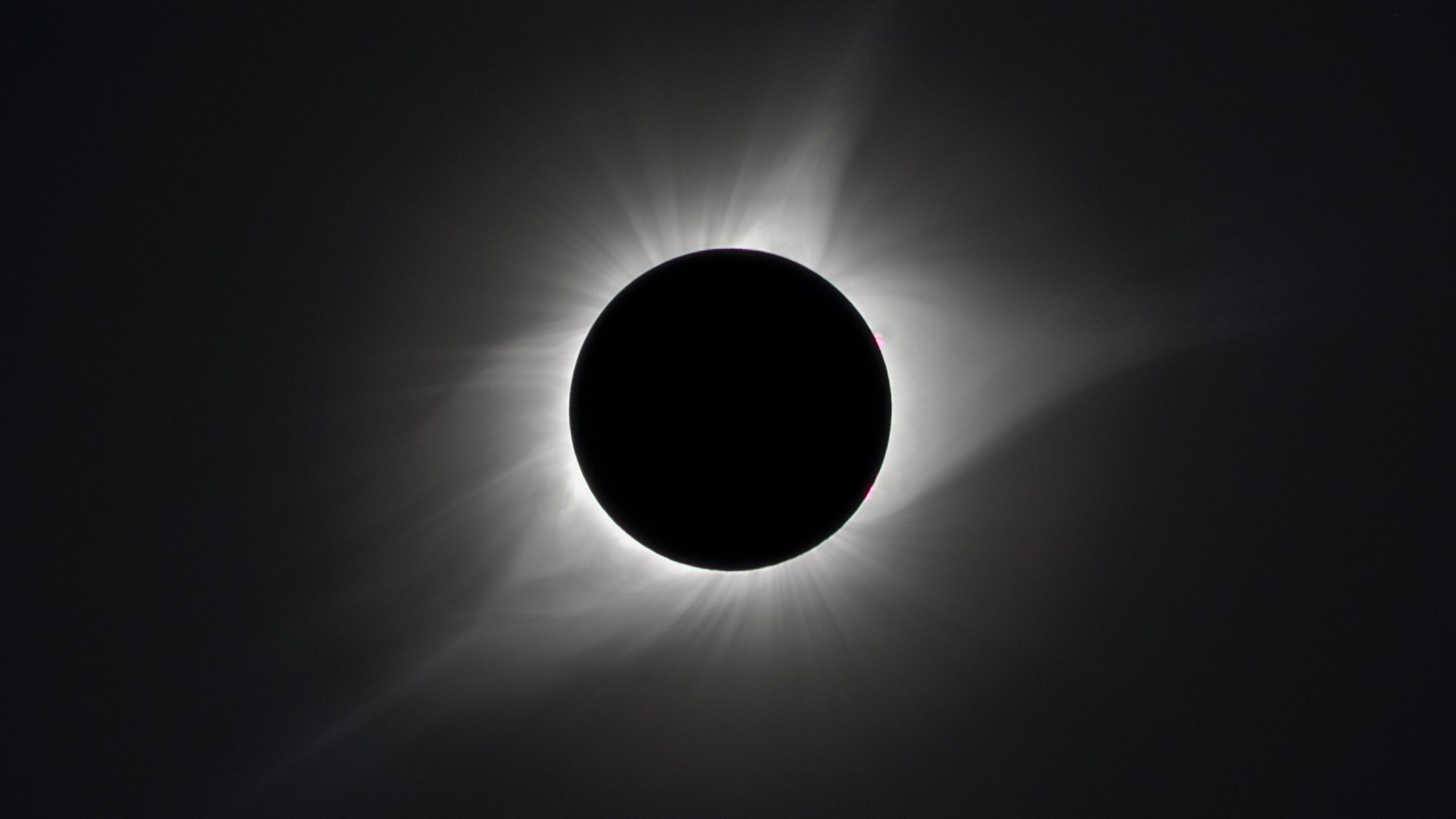
A total solar eclipse is one of the most spectacular astronomical events that you can experience. Here at Frost Science, we are eagerly preparing for two solar eclipses on the horizon: an annular eclipse on October 14, 2023, and a total solar eclipse on April 8, 2024.
During a total solar eclipse, the Moon crosses between the Sun and the Earth, blocking incoming sunlight. Not everyone on Earth experiences a solar eclipse in the same way; only people at locations exactly in the middle of the Moon’s shadow experience “totality,” which is where all the incoming sunlight is blocked. Even if you are in exactly the right location you will only see totality for a few minutes.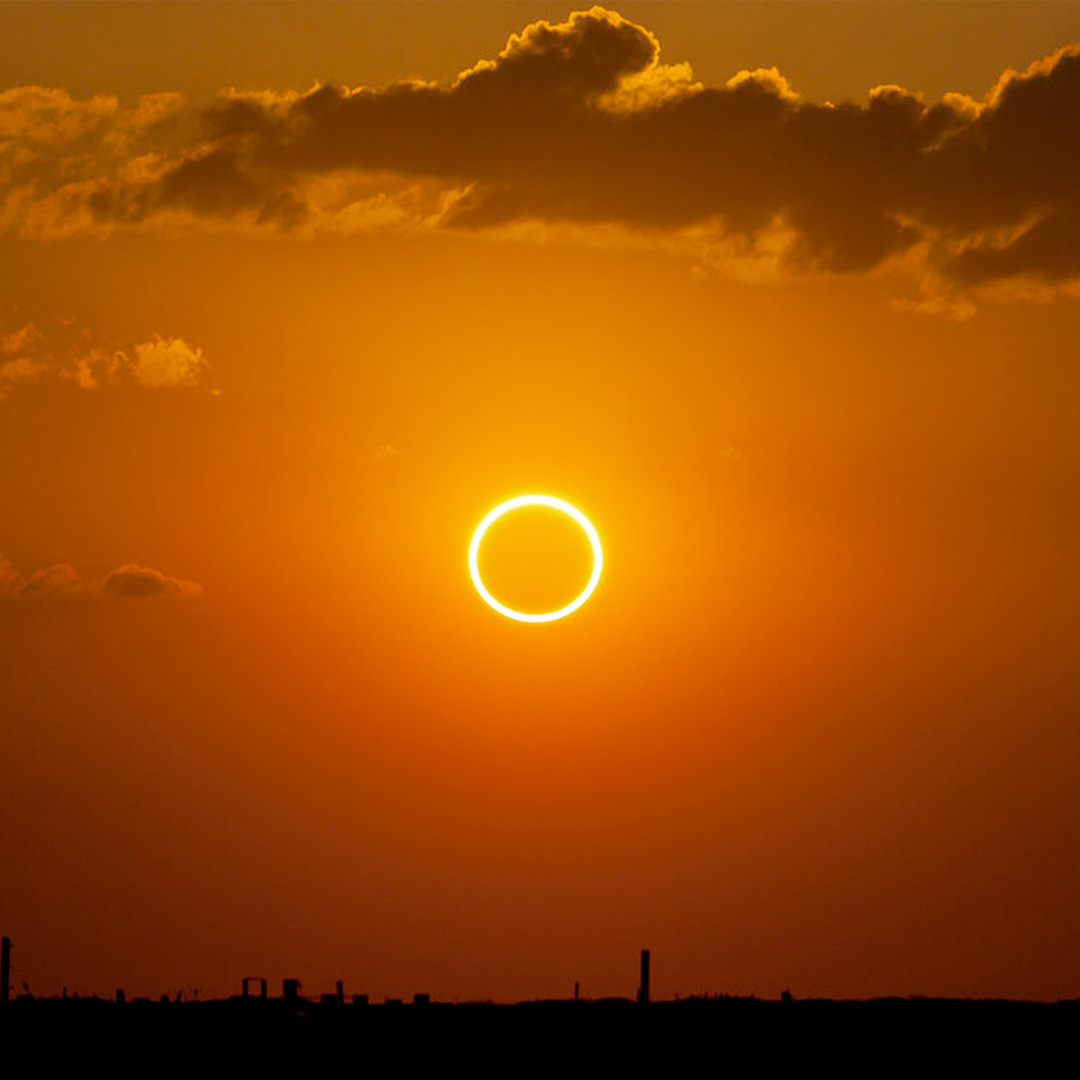
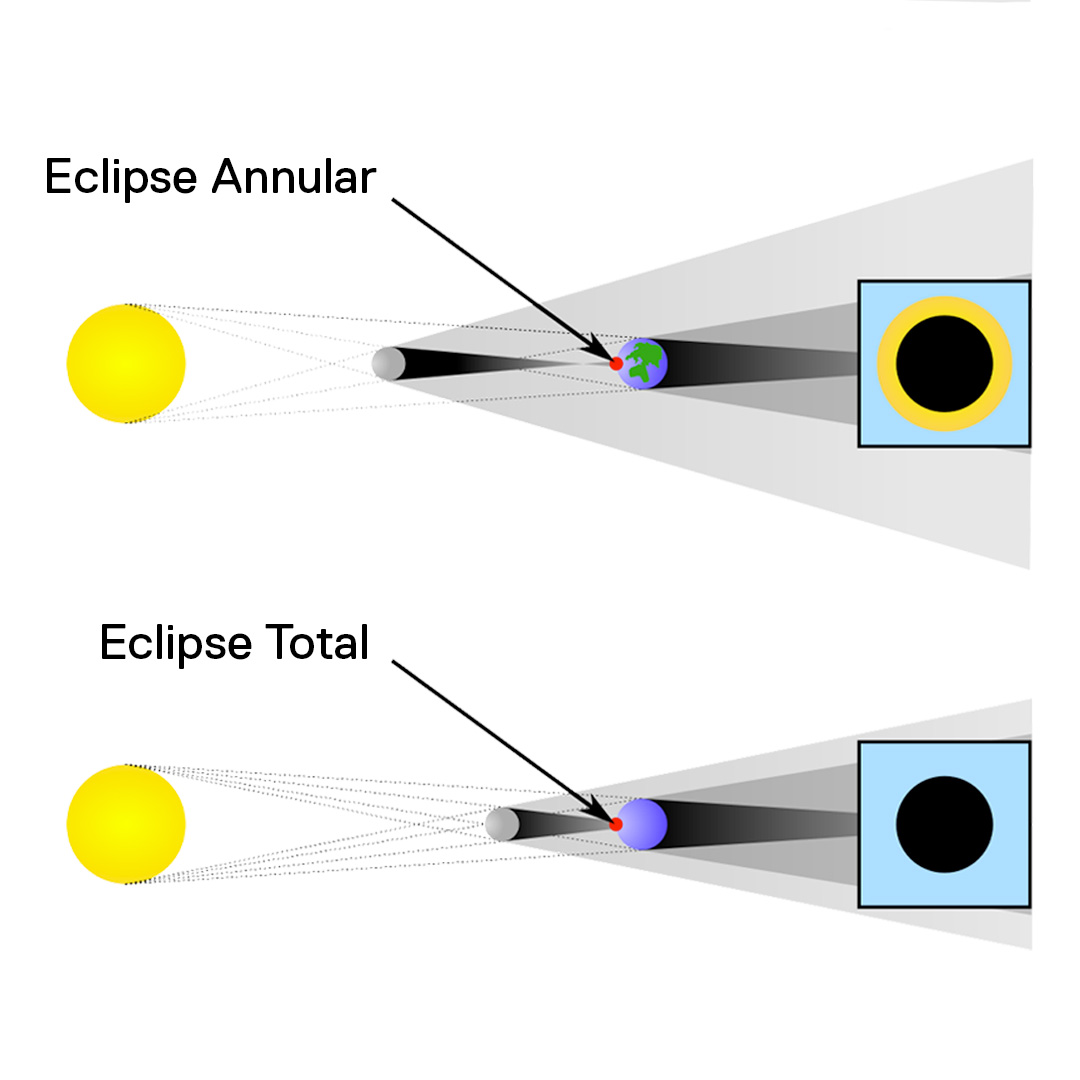
In Miami, we are far from the centerline of the October and April eclipse paths, so we will see both events as partial eclipses. However, that doesn’t make them any less exciting, especially because the next total solar eclipse visible from South Florida will not occur until August 12, 2045!
To get ready for these upcoming celestial wonders, Frost Science Director of Science Communication, Dr. Cassie Freund, sat down with VP of Education and Director of the Frost Planetarium, Dr. Doug Roberts, to ask a few questions about what to expect.
The October 14, 2023 event is an annular eclipse. What does that mean?
An annular eclipse occurs when the Moon is a bit further away from the Earth than in a total solar eclipse, meaning it also appears smaller and its shadow doesn’t completely cover the disk of the Sun. This leaves a ring of sunlight around the Moon, even when the two are exactly aligned. Annular eclipses are really beautiful!
From here in Miami, we will observe the annular eclipse start at 11:57 a.m., when the Moon will begin to pass in front of the Sun and reach its maximum coverage of 58% of the Sun at 1:34 p.m. The eclipse will end at 3:12 p.m.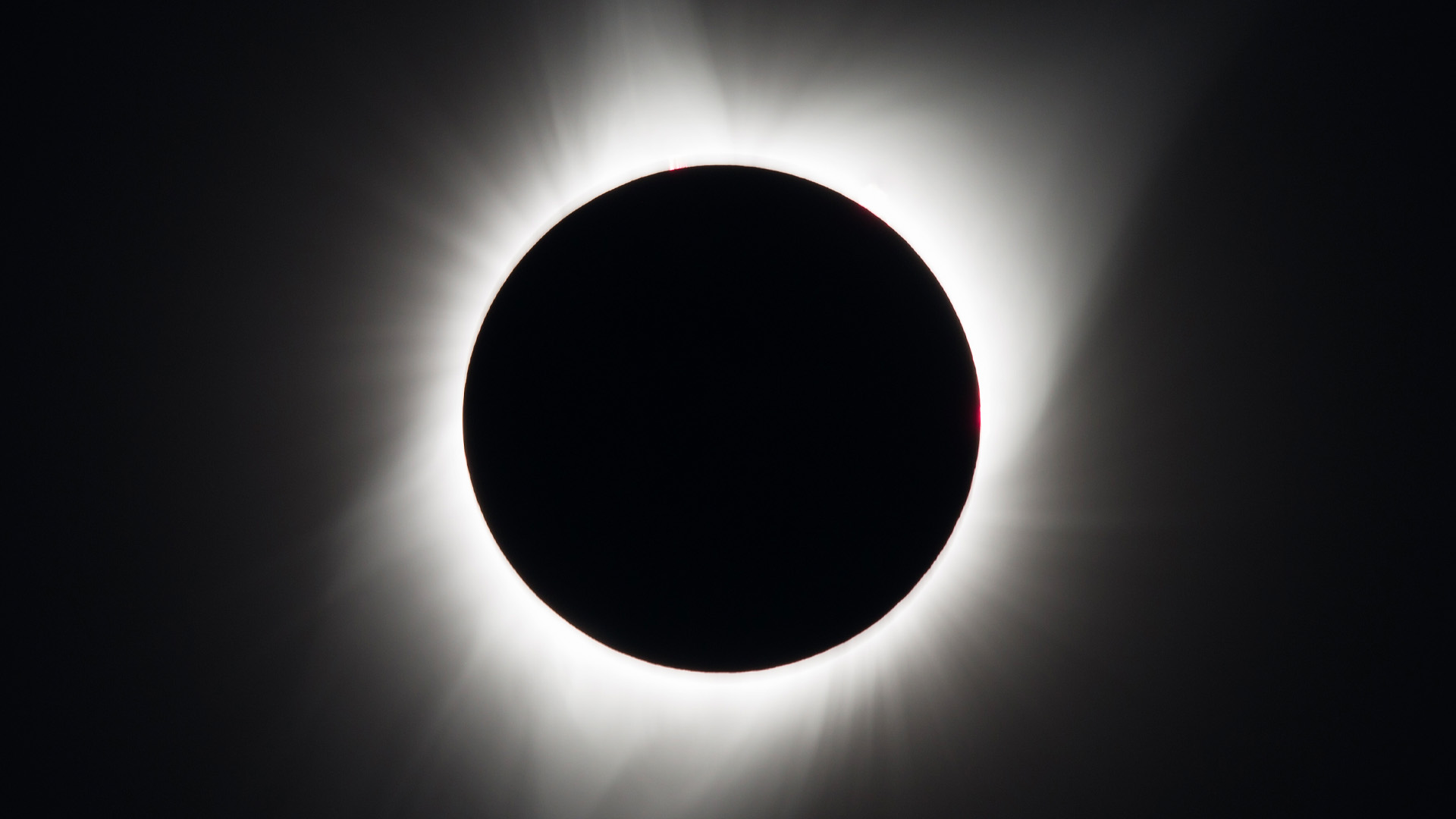
Sounds exciting. And what about the total solar eclipse on April 8, 2024?
Well, this is the really great one travel to see totality. if you happen to be on the eclipse path, you will see the Moon completely block out the Sun. Here in Miami, the maximum coverage of the Sun by the Moon will be 46% at 3:02 p.m. The eclipse will start at 1:48 p.m. and end at 4:13 p.m.
How do we already know the exact times of these events, even though they are still months and months away?
The planets orbit the Sun and our Moon orbits the Earth in very predictable manner. The same way we know exactly what time sunrise happens allows us to predict eclipses. Even without fancy technology, ancient cultures observed the motions of bodies in the sky accurately enough to predict eclipses thousands of years ago.
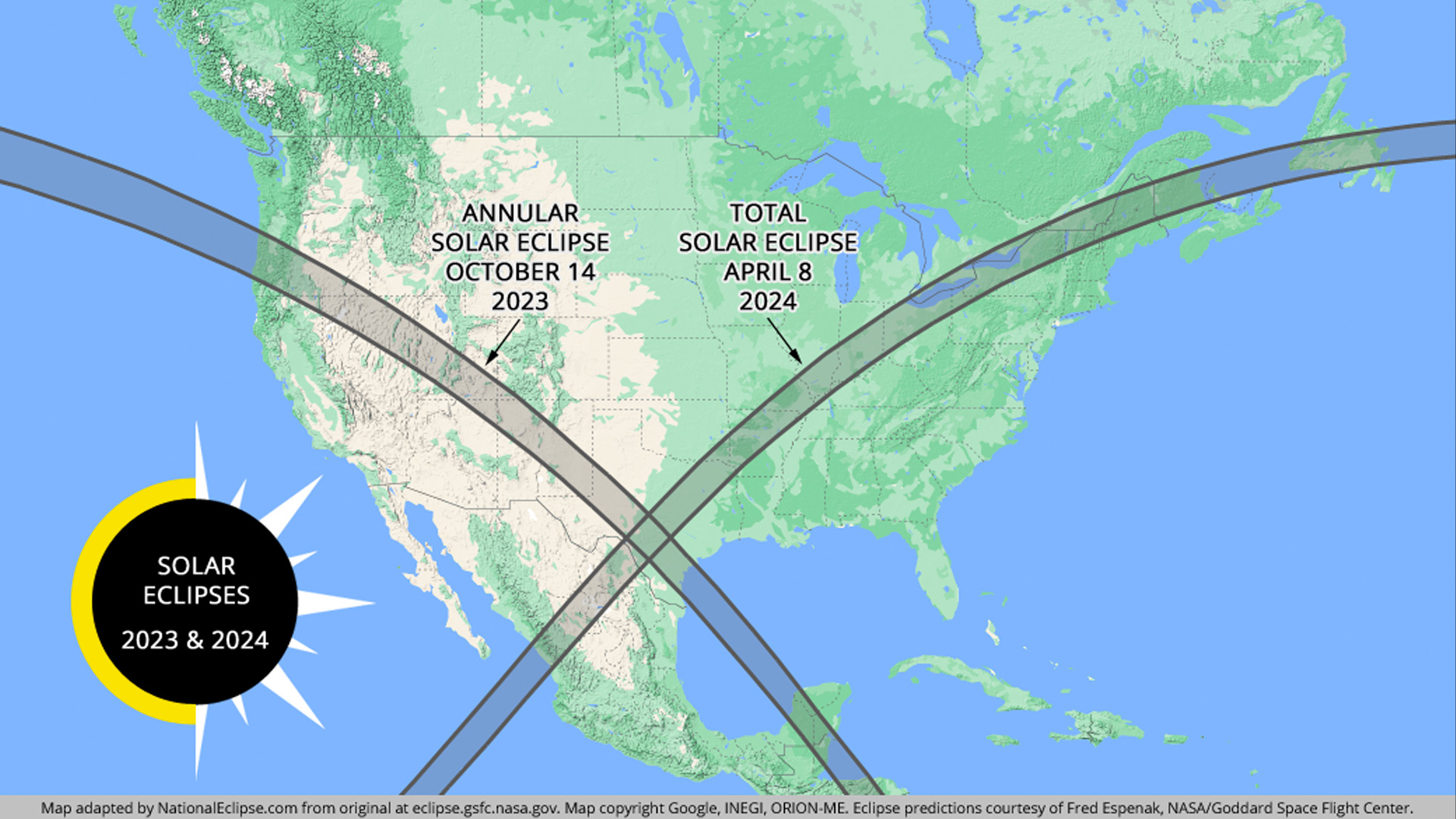
How can I watch safely?
Good question. It is never safe to look at the Sun without proper equipment and instruction. You should only use solar eclipse glasses with the ISO 12312-2 safety standard to view the Sun. The solar eclipse glasses from the Science Store here at Frost Science have been identified by the American Astronomical Society as appropriate for viewing the eclipse safely*. If you have proper viewing glasses from the last eclipse, or if you want to reuse them in the future, they are still safe as long as they aren’t damaged, scratched, punctured or torn. These glasses and other safe solar viewing tools are a good investment if you’re interested in observing the Sun, because you can use them at any time, not just during an eclipse!
What is totality like?
If you are lucky enough to travel to a location along the path of totality for the April 8, 2024 eclipse, you will experience a few minutes when the Moon fully blocks the Sun and it will temporarily feel like dusk. During totality, using your eyes – no telescope needed – you may be able to see wisps of plasma coming out from the Sun (called the corona). And we aren’t the only ones on Earth that can perceive an eclipse. As the sky darkens and temperatures begin to cool, some animals behave as if nighttime has arrived. Doves and other songbirds will act out bedtime routines, briefly going silent before singing again when the Sun reappears.
That is fascinating! What other interesting facts about the Sun and Moon can you share?
We live on a very special planet, where the Sun’s and Moon’s angular diameters (meaning, the sizes we perceive these celestial objects to be) are about the same. This is because, while the Sun is about 400 times farther from the Earth than the Moon is, the Sun’s diameter is also about 400 times larger than the diameter of the Moon.
Another fun fact is that the last total solar eclipse will occur in 500 million years. Why? Because every year, the Moon’s orbit expands by about 1.5 inches (about the length of an AirPod). So 500 million years from now, the Moon will no longer be close enough to Earth to completely cover the Sun during eclipses.
We love watching the sky as much as you do, whether it is during an eclipse or just on a normal day! Be sure to share your favorite photos and moments with us on social media at @frostscience across all platforms, and using our hashtags #ItsScienceMiami and #FrostScience.
*Please carefully read user instructions on eclipse glasses before use. Use of eclipse glasses is at your own risk.